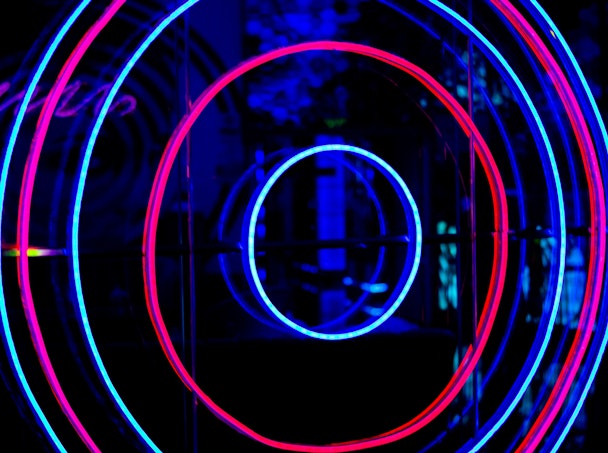Why out-of-home is the ultimate contextual medium
Is contextual marketing making a return? For The Drum’s out-of-home Deep Dive, Posterscope’s Scott Green argues that it never left, and it reaches new heights with smart real-world activations.

Does out-of-home contain the future of contextual advertising? / Brady Bellini via Unsplash
Apparently, contextual marketing is ‘back’. But the truth is that it never really went away.
Contextual marketing is also as old as the hills. A leaflet drop for a local takeaway is as about as contextual as it gets. Even the shift to contextual marketing online is not new; it’s not even a comeback. It has always been used by marketers alongside the more personalized, audience-based targeting from 3rd party cookies. Often more effectively. Certainly, less intrusively.
But digital marketing changed things up, making contextual marketing more convenient for many brands. In our rush to micro-target audiences, the third-party cookie reigned supreme, making it easier to buy data and track, re-target and ultimately validate digital marketing’s effectiveness. Of course, seeing ads for something you’ve already purchased demonstrates that no system is ever perfect.
We know data privacy is changing. Brands must look to build out, and better understand, their first-party data. They must look to develop a better understanding and use of context by filtering in location data, hyper-local weather targeting, cultural marketing, and predictive analytics to tap into behavioral patterns.
Advertisement
Where the people are: understanding mobility
Despite pandemic-induced shifts in behavior, it’s important to step out of our media bubble for a second and remember that even at the height of the pandemic less than 50% of the working population was remote. People kept moving, and although those patterns have shifted slightly (for example 64% work 3 or more days in the office vs 77% pre-Covid, whereas weekend footfall in city centers has increased), people are still spending a significant proportion of their daily lives away from their homes. With a mobile in their pocket.
According to Statista, 93% of the UK adult population owns a smartphone (Pew puts the US number at 85%). Similarweb found that nearly 63% of internet traffic in the UK comes via a mobile device, with 95% of users accessing Facebook via mobile.
All of this means that an important part of planning for context comes down to understanding mobility. Mobility reflects who the consumer is as well as their lifestyle, choices, and mindset. Location data is the key output that reflects mobility and informs the consumer journey in a whole new way. Out-of-home (OOH) advertising, at the heart of mobility, is well placed as a highly-contextual medium to nudge consumers into the buying funnel where digital channels increasingly take over.
The 2012 Cannes Lions-winning OOH campaign for the Google Voice mobile search app in the UK is a classic example. Posters featured pronunciations of London Underground stations and other things people are known to search for on their mobiles while out and about. Location-specific phrases were key to the campaign, presented as mysterious-looking phonetic spellings such as ‘pih-ka-di-lee sur-khus’ at Piccadilly Circus station and ‘ley-tist skohrz’ for ‘latest scores’ at Chelsea football club, to show how useful it would be if you could quickly search on the go. Context artfully combined with mobility.
Advertisement
Everything happens somewhere
This demonstrates what’s great for OOH: everything happens somewhere. There’s no single source of truth in data regarding consumers' behavior in the physical world, so we at Posterscope mine multiple data sets to build our understanding of real-world contexts. In addition to location and mobility patterns, we can track online mobile behavior to reveal what people are looking at, commenting on, thinking about or feeling. We know where and when they are doing this.
Over time we can identify patterns and build intricate and detailed models that forecast where specific groups of people are likely to be, when they are going to be there, and what their interests are.
There is a natural synergy between OOH and mobile experience. Both are steeped in location; OOH is the perfect medium to intercept customers' physical journeys.
Suggested newsletters for you
Context equals relevancy, which drives consideration. A study, called Moments of Truth, that we undertook with Clear Chanel and JC Decaux demonstrated this power of OOH. When relevant creative was viewed at relevant moments, brain response increased by +32%, significantly improving both brand and performance metrics.
Context is all about understanding the customer journey, frame of mind and receptiveness to messages. Understanding how to deliver information on the go is imperative for brands.
So, as context jumps back into the spotlight it’s worth remembering that context and location exist in both the physical and digital worlds.
Those worlds are colliding at pace, so OOH is well placed as a highly-contextual medium to enable brands to engage consumers with authentic messages at any relevant moment, earning their attention.
For more on OOH's past present and future, check out our Deep Dive hub.
Content by The Drum Network member:

Posterscope
Posterscope is the world’s leading out-of-home and location marketing specialist with billings in excess of $3 billion. It knows more about what people think,...
Find out more
